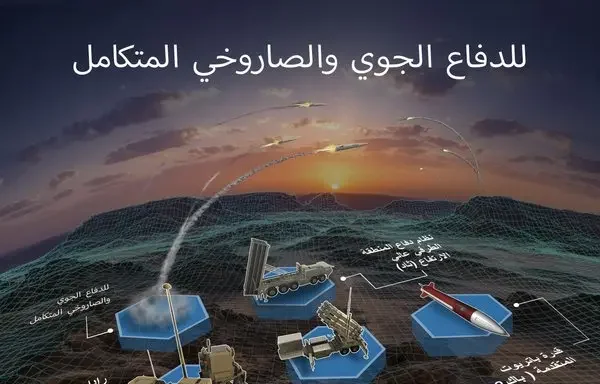Layered defense built through coordinated systems
Integrated Air and Missile Defense (IAMD) is a coordinated framework that links multiple platforms to detect, track and defeat a wide range of airborne threats.
The structure blends radar networks, interceptor missiles and command-and-control nodes to create overlapping coverage that improves reliability and increases effectiveness.
Defense officials describe IAMD as essential for countering ballistic missiles, cruise missiles, unmanned aircraft and hostile aircraft across different altitude bands.

This is viewed as both a protective shield and a powerful deterrent against adversaries considering strikes on the US or its partners.
The network sends a clear signal that attempted air or missile attacks face a sharply reduced chance of success.
Advances in radar fusion, communication networks and engagement coordination continue to improve the framework's performance in real-world environments.
A major strength of the region's defensive architecture in the Middle East is the integration of the Terminal High Altitude Area Defense (THAAD) with the Patriot Air and Missile Defense System.
Together these platforms deliver layered protection that helps defend communities, military forces and infrastructure from diverse aerial threats.
Israel and Saudi Arabia operate THAAD units, while Israel, Saudi Arabia, the United Arab Emirates, Qatar, and Kuwait employ Patriot systems.
THAAD is designed to intercept ballistic missiles in their terminal phase at high altitudes, including outside the atmosphere.
The THAAD radar, the Army/Navy Transportable Radar Surveillance (AN/TPY-2), provides long-range detection and high-resolution tracking of ballistic missiles.
THAAD interceptors rely on a hit-to-kill method, destroying incoming missiles through direct impact rather than explosives.
Its command-and-control supports fast coordination across large areas during complex engagements.
THAAD's high-altitude reach allows it to intercept missiles before they descend into lower airspace, giving commanders earlier engagement opportunities.
This potential complements lower-tier defenses and supports broader protection for regional partners.
Patriot system provides essential lower-tier defense
The Patriot system provides short-to-medium-range defense and can counter ballistic missiles, cruise missiles, unmanned aircraft and hostile aircraft.
Its AN/MPQ-65 radar tracks maneuvering and low-flying threats that might evade higher-altitude sensors.
Patriot batteries can fire multiple interceptor types, including Patriot Advanced Capability-2 (PAC-2) missiles for aircraft and Patriot Advanced Capability-3 (PAC-3) missiles that use hit-to-kill technology against ballistic missiles.
Patriot command-and-control components can coordinate engagements directly or pass tracking data to THAAD, strengthening layered defense.
The platform delivers close-range protection for military forces and critical infrastructure.
With multiple interceptor options, Patriot counters a wider threat spectrum than THAAD, making both platforms highly complementary within the IAMD framework.
![Terminal High Altitude Area Defense (THAAD) interceptors launch during a live-fire exercise, demonstrating layered air and missile defense capabilities. Providing short-to-medium-range protection against ballistic missiles, cruise missiles and aerial threats. [US Department of War]](/ssc/images/2025/11/20/52742-_13b__thaad-600_384.webp)





